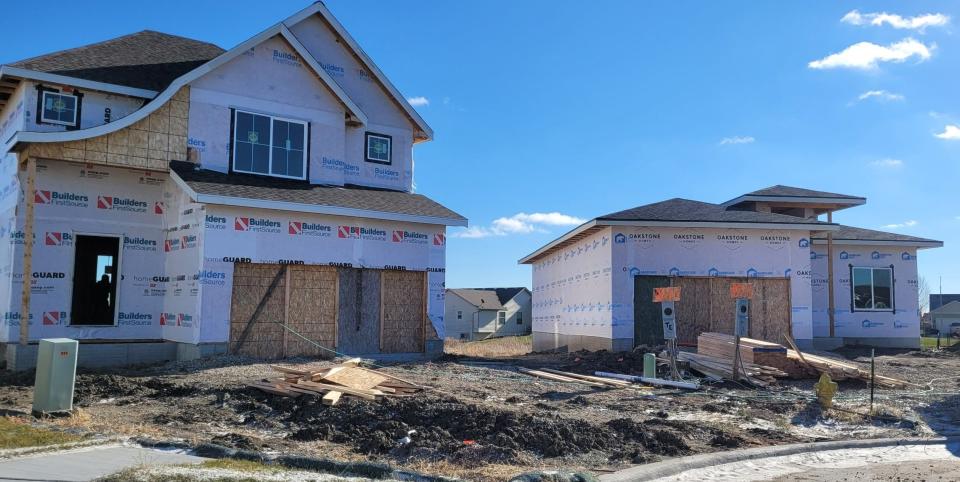Which Des Moines metro cities tops list of fastest-growing, per new U.S. Census data?
Waukee, Bondurant and Norwalk were the fastest-growing communities in the Des Moines metro between April 2020 and the first half of 2023, according to new data from the U.S. Census Bureau.
Two cities — Des Moines and and its neighbor Windsor Heights — lost residents during the same time frame.
The bureau on Thursday released population estimates for cities, towns and other incorporated places as of July 1, 2023. The data also showed population changes since April 1, 2020.

Waukee added an estimated 7,684 new people in that timeframe or about 202.6 people per month. Heather Behrens, spokesperson for Waukee, said she was not surprised by the census data and was glad it reflected what she said people see in the community.
"Waukee has been a community of choice for years now” as people move there for the quality of its schools, amenities such as parks and trails, and its safety, Behrens said.
The data's release comes as nearly every Des Moines suburb is preparing for or already doing a special census.
In 2024, that includes Ankeny, Norwalk, Pleasant Hill and Waukee in the summer and Bondurant in the fall. Other cities, such as Johnston, Altoona and Grimes, are planning for a special census in 2025.
More: Get your steps in and get paid: Des Moines suburbs looking for special census workers
The regular census to count the population of every community in the United States happens once a decade, and the last census happened in 2020. But growing cities can request a special census in between decades to update their official population counts, which can unlock more funding from sources tied to population, especially road funds.
Here's how the cities of the metro ranked in terms of how much they changed.
Waukee
April 2020 estimated population — 23,961
July 2023 estimated population — 31,645
Population growth — 32%
Bondurant
April 2020 estimated population — 7,373
July 2023 estimated population — 8,959
Population growth — 21.5%
Norwalk
April 2020 estimated population — 12,800
July 2023 estimated population — 14,873
Population growth — 16%
Pleasant Hill
April 2020 estimated population — 10,179
July 2023 estimated population — 11,617
Population growth — 14%
Polk City
April 2020 estimated population — 5,552
July 2023 estimated population — 6,303
Population growth — 13.5%
Altoona
April 2020 estimated population — 19,593
July 2023 estimated population — 21,698
Population growth — 11%
Ankeny
April 2020 estimated population — 68,062
July 2023 estimated population — 74,458
Population growth — 9%
Grimes
April 2020 estimated population — 15,395
July 2023 estimated population — 16,362
Population growth — 6%
West Des Moines
April 2020 estimated population — 68,728
July 2023 estimated population — 72,205
Population growth — 5%
Urbandale
April 2020 estimated population — 45,582
July 2023 estimated population — 46,729
Population growth — 2.5%
Johnston
April 2020 estimated population — 24,058
July 2023 estimated population — 24,640
Population growth — 2%
Clive
April 2020 estimated population — 18,602
July 2023 estimated population — 19,005
Population growth — 2%
Des Moines
April 2020 estimated population — 214,124
July 2023 estimated population — 210,381
Population loss — 2%
Windsor Heights
April 2020 estimated population — 5,256
July 2023 estimated population — 5,067
Population loss — 4%
Phillip Sitter covers the western suburbs for the Des Moines Register. Phillip can be reached via email at psitter@gannett.com or on X, formerly known as Twitter, at @pslifeisabeauty.
This article originally appeared on Des Moines Register: Waukee is fastest-growing city in Des Moines metro, census data shows

